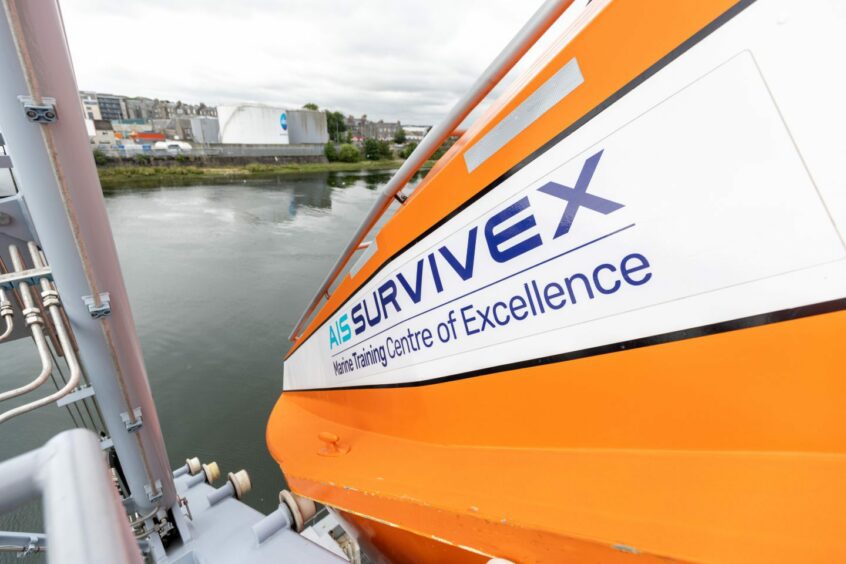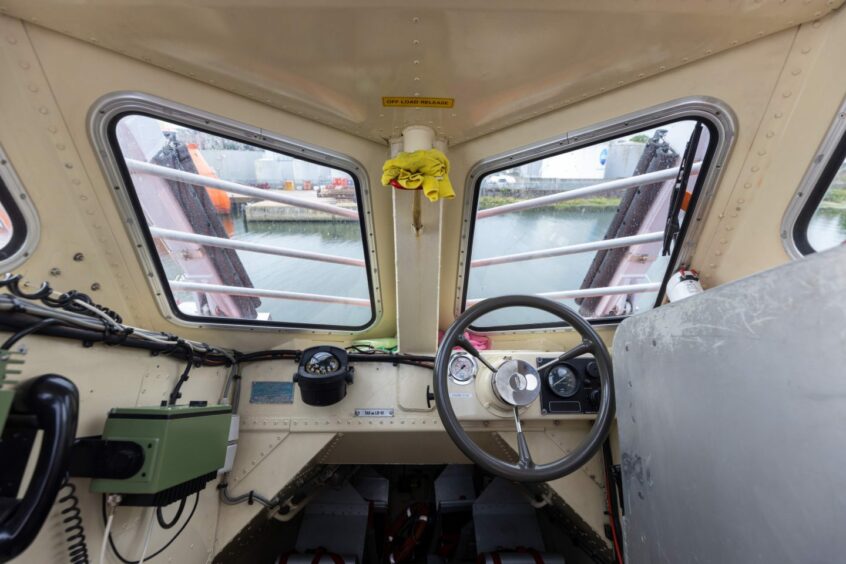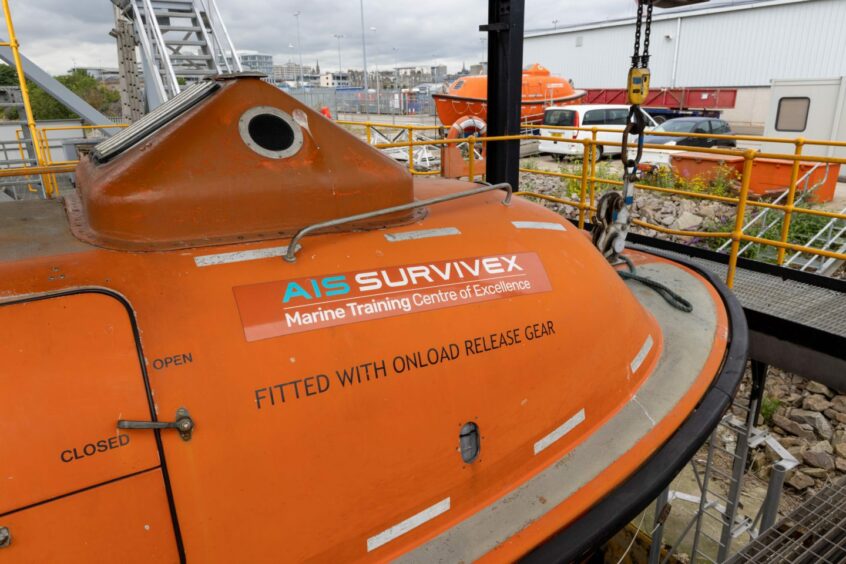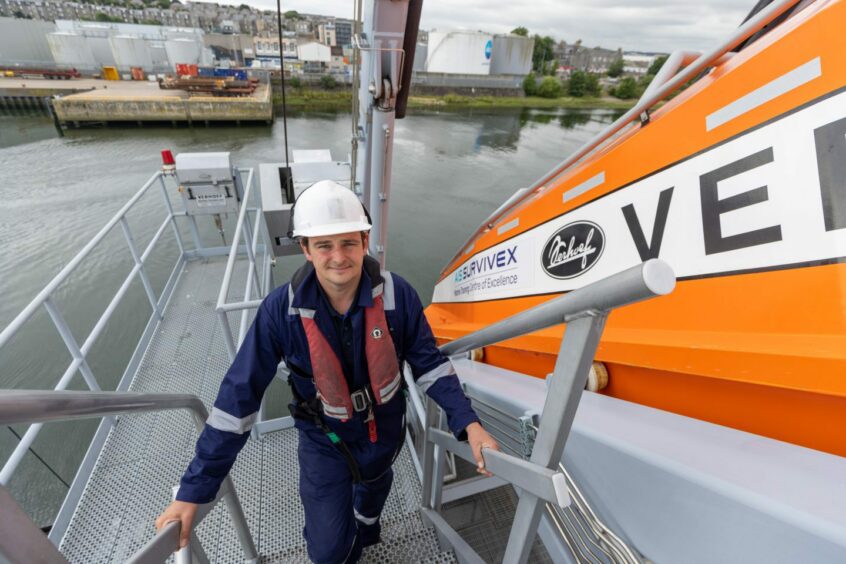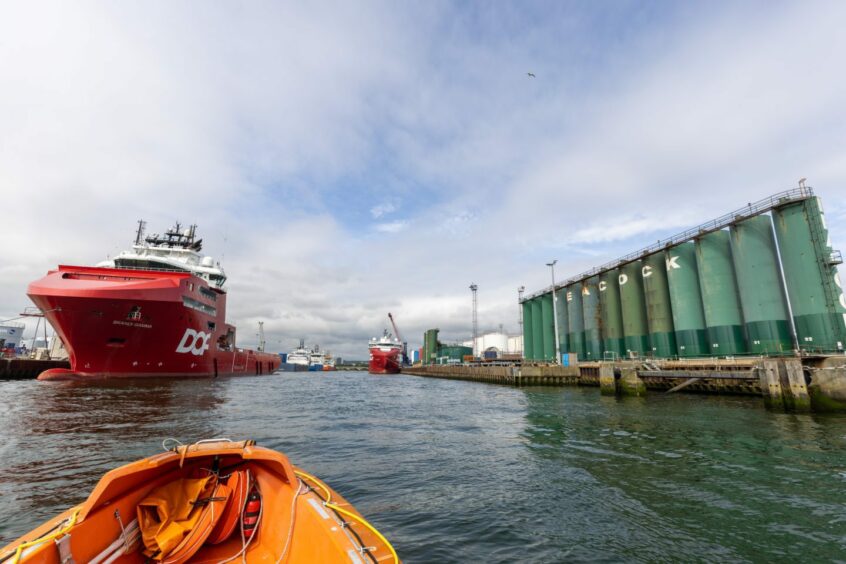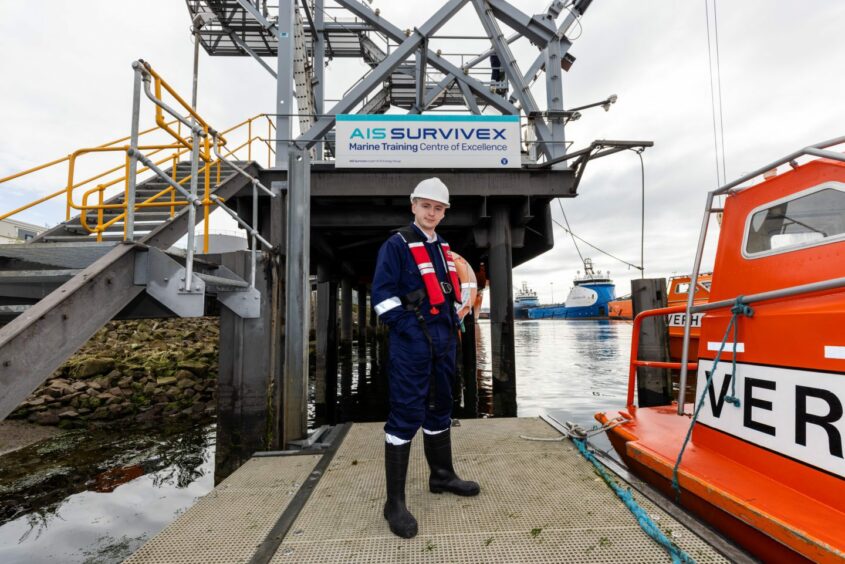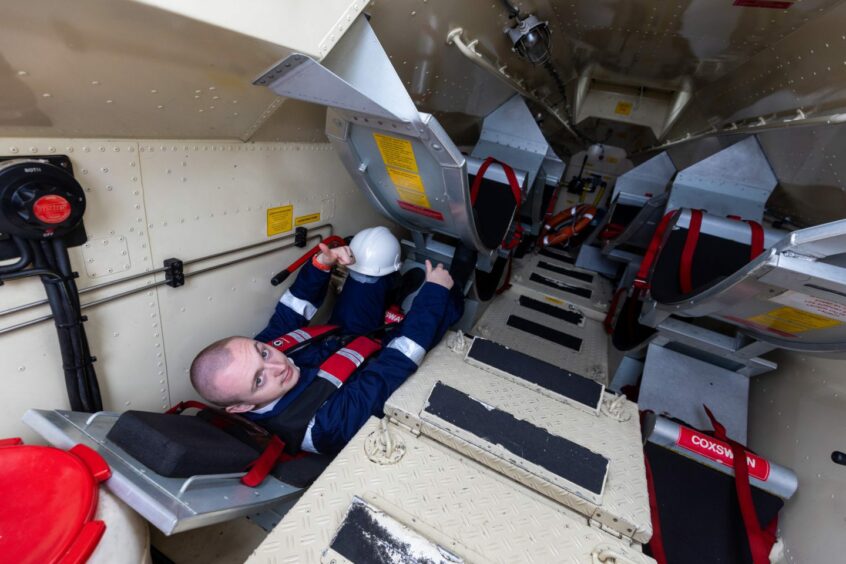After reporting on AIS Survivex’s new lifeboat simulator Energy Voice was invited to try it out, which escalated to us doing our real-life free fall launch.
AIS Survivex invested an estimated £850 thousand on its new lifeboat simulator for its Dyce facility, but the real drop is the one which puts your stomach in your throat.
Read on to see how our reporter got on in the simulator, and being launched in a real lifeboat (video below).
A huge investment for the comapny but it’s very benificial for the deligates.
Free fall lifeboat simulator
The AIS Survivex training coordinators can tailor the training experience to the person in the boat, whether that be creating new scenarios, introducing helicopters flying overhead, changing the time of day to train at night or even changing the colours of boats and rigs to match the trainee’s company.
This new training tech can simulate a range of weather conditions all the way up to gale force eight.
“We have had people feeling queasy in there as well because it will still roll and move as a normal lifeboat would so in that respect it is very immersive and I think it’s the future of training.”
The lifeboat simulator is a welcomed new addition to the AIS Survivex Dyce facility with those who have used it for refresher training so far singing its praises, according to the AIS Survivex staff running the course.
Marine team leader George Masson said: “All the feedback we’ve had has been positive, they all really enjoy it, they all think it’s very realistic.
“This is coming from people that have only ever been in a boat in calm conditions, they won’t have been in a boat in rough weather because obviously, we don’t train in rough weather. ”
“Unless they’ve actually been involved in an evacuation in the past, they’re not going to have to use the boat in a real situation so this follows from an alarm sounding on the platform right the way through to offloading personnel or rescuing someone from the water, whatever it might be.”
AIS Survivex’s Dyce facility has three simulators, one is a mobile desktop sim that can be taken offshore and set up to do the same exercise as the freefall simulator but without the motion.
In addition, there is also a twin fall simulator which is not a motion simulator either but can run the same exercises as the freefall motion simulator. This is based on a twin fall lifeboat which is a boat that is lowered on two wires into the water.
The third simulator is the motion free fall lifeboat simulator.
Mr Masson went on to explain what the new simulator does specifically: “Basically what we have is a full nation lifeboat simulator, this one [the one we tried] is based on a free fall system so it is designed to launch without any wires lowering it into the water.
“It’s a very good piece of equipment, it simulates the weather handling of a lifeboat to a very high percentage, it’s very good at what it does and it makes the simulation very realistic as far as the delegates are concerned.
“All the guys coming on this course effectively are on a refresher course so nobody will come here having never been in a boat before, they’ve all done a lifeboat course in a propper lifeboat out on the water whether that be out in the harbour or out at sea.
“We have had people feeling queasy in there as well because it will still roll and move as a normal lifeboat would so in that respect it is very immersive and I think it’s the future of training.”
Taking the plunge in the reel thing
After using the new simulator we were invited to Dyce to experience the real thing, going on board a freefall lifeboat at Aberdeen harbour.
This boat falls 10 metres in high tide, a third of the height an offshore freefall lifeboat plummets in the event of an evacuation.
It’s a hell of a thrill that one!
However, that does not make it easy as our reporter Ryan Duff described, the fall will still put your stomach in your throat.
Energy Voice reporter Ryan Duff said: “That’s the part the simulation can’t prepare you for. The way the boat handles on the water translates perfectly to the motion simulator. However, the experience of falling through the air and hitting the water is totally unique to the real thing. ”

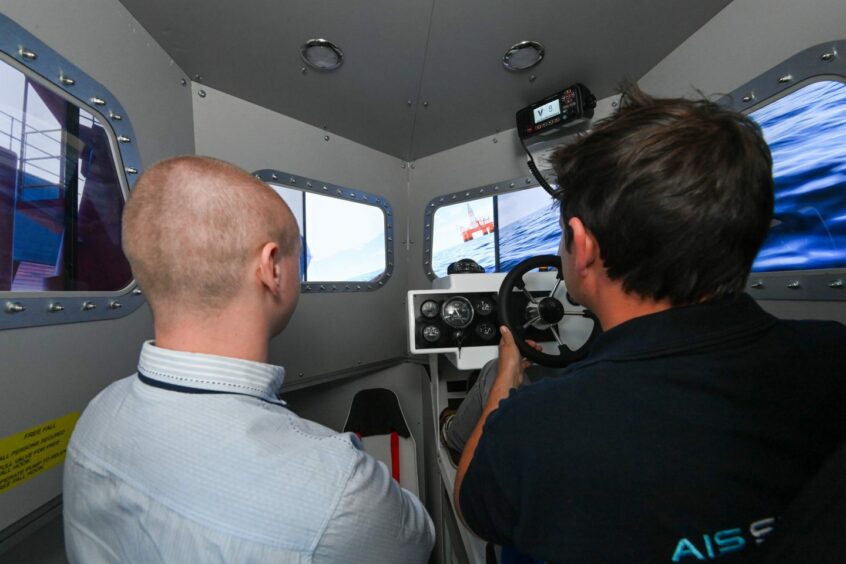 © Supplied by Kenny Elrick
© Supplied by Kenny Elrick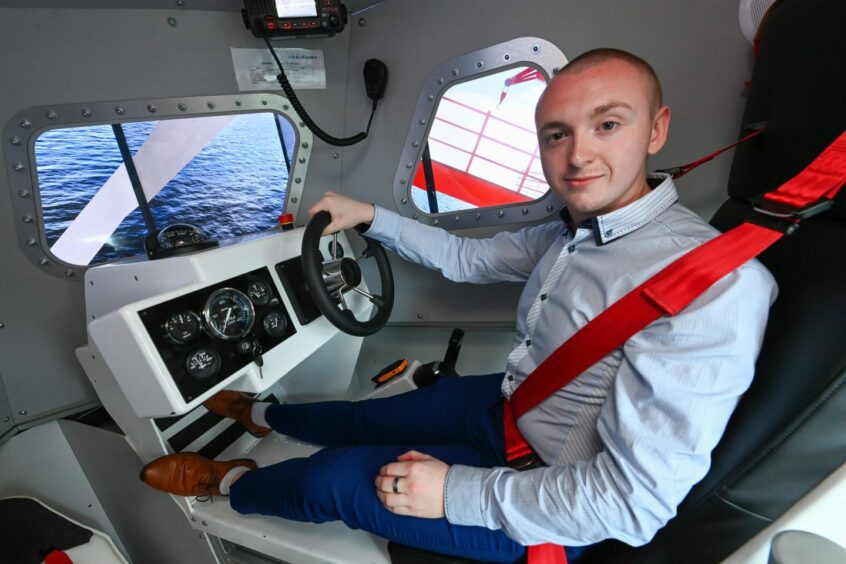 © Supplied by Kenny Elrick
© Supplied by Kenny Elrick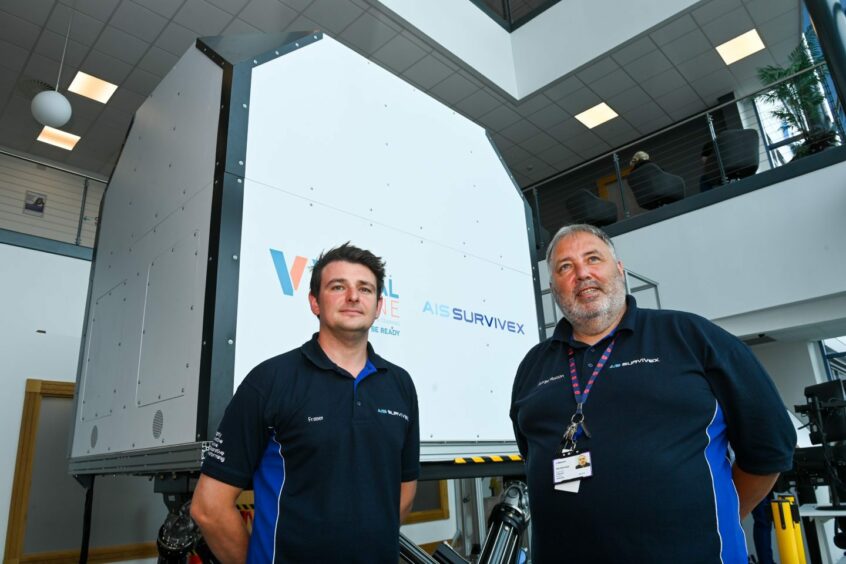 © Supplied by Kenny Elrick
© Supplied by Kenny Elrick